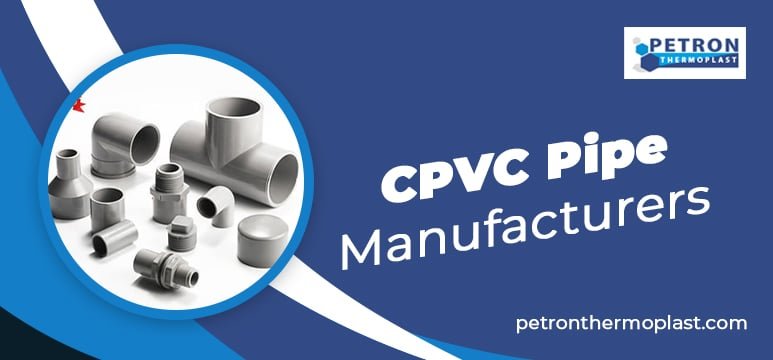Installation of CPVC (chlorinated polyvinyl chloride) pipe and fittings are rapid and affordable. Solvent cement welding, also known as cold welding, is used to join pipes, and it uses affordable, easily accessible instruments. Additionally, because CPVC pipe fittings made by CPVC Pipe Manufacturers do not require heat fusion or other complicated installation processes, they can be installed more quickly, safely, and easily than Pipe PPR and other plastic and metallic pipes.
A dependable, long-lasting plumbing system will be produced by adhering to best practices for installing pipes and fittings.
Storage and Handling
Despite its durability, CPVC should be stored with care to ensure effective installation.
- Tip #1: Store pipe on level surfaces free from sharp, jagged pebbles or other anything that might damage or puncture it. Never place anything heavy, pointy, or abrasive directly on top of the pipe.
- Tip #2: When the pipe is outside or otherwise exposed to UV rays, keep it covered. Even though piping won’t be harmed by minor UV exposure, we nevertheless advise covering it with a non-transparent material.
- Tip #3: Store CPVC pipe away from busy places. Never keep pipes in locations where large, powerful machinery is moved about. CPVC is a robust material, however, driving heavy equipment over the pipes might harm them.
Preparing For Installation
Despite the ease of installing CPVC pipes, there are a few precautions that need to be taken to guarantee a durable system.
- Tip #4: Put on gloves, safety glasses, and protective clothes. Even though solvent cement welding is a lot safer than other installation techniques, skin and eyes should still be protected because it’s a chemical operation.
The following dangers will be reduced while using or handling solvent cement, primers, and cleansers by sufficient ventilation and excellent work practices:
Keep away from sparks and open flame
Keep containers closed except when in use
Dispose of rags and containers properly
Avoid eye and skin contact. - Tip #5: To guarantee a solid solvent cemented connection, use a cleaner to remove any dust or moisture from the pipe and fittings.
- Tip #6: Before and after the pipe is cut, inspect it. There shouldn’t be any damage or noticeable fissures. If there is damage, recut the pipe 5 cm from the end of the fracture.
- Fitting preparation – Clean the pipe and fitting of any debris or moisture. Dry-fit the pipe and fitting, making contact about halfway through the fitting. Points to Keep in Mind: Pipe and fitting will gradually get snugger with a tapered socket. Too loose or too tight is unsettling.)
- Tip #7: To achieve a square cut and increase the bonding surface, choose the right equipment. Use a fine-toothed blade and a sharp circular saw, miter saw, hand saw, or ratchet cutter (6 to 7 teeth per centimeter).
- Tip #8: Earlier than solvent welding, bevel the pipe. Make a little bevel along the pipe edge with sandpaper. By doing this, the solvent cement will not be forced into the fitting.
During Installation
Newly produced joints become the strongest component of the system when put appropriately. Observe a few ground rules to get this result.
- Choosing Solvent Cements & Primers – Solvent Cement for Petron Thermoplast CPVC Pipe Manufacturers, must meet the specifications of ASTM F-493 or a similar standard, and it must have the appropriate labeling on the container.
- CPVC Cement Shelf Life – CPVC solvent cement is designed to have a 2-year shelf life. Aged cement frequently takes on a different color, starts to thicken, or starts to resemble gelatin or jelly.
- Primer /Cleaner application – When installing pipes and fittings with a larger diameter (over two inches), primer is used. Solvent cement that cures in one step doesn’t need a primer. Always check to see if the pipe and fittings are dry and clean. The bonding surfaces are prepared in a two-step procedure using primer/cleaner. The applicator’s diameter shouldn’t be more than half that of the pipe or fitting. Prime the pipe and the fitting with primer. Avoid letting cement or primer pool inside the fitting or assembly.
- Tip #9: Try to sew seams together in cooler or shaded regions. The pace at which solvent cement evaporates is accelerated by heat. Stay in a cool environment to ensure that the solvent cement doesn’t start to dry before you’re ready to join the pipe and fitting. Pipes and fittings should only be joined when the solvent cement is wet. Apply a thin, uniform layer of solvent cement within the fittings. Pipe ends should receive a thicker, even coat.
- Tip #10: Before continuing, let the joint settle. Insert the pipe into the fitting right away, turning it by 1/4 to 1/2 turn as you do so. Once the assembly is in place and straight, hold the joint for 5 to 10 seconds. Verify the connection area for an even cement bead.
- Tip #11: Never reapply solvent cement over dried residue. If you don’t have time to bind the pipe and fitting before the solvent cement dries, you can recut the pipe, remove the excess solvent cement with sandpaper, or use a new pipe and fitting.
- Tip #12: Use the appropriate cure period. According to the temperature, humidity, and pipe size, Petron CPVC cure periods change. For precise timings, consult the manufacturer’s instructions for the solvent cement. Although general time recommendations are included in the Petron Pipe and Fittings Installation Guide, they shouldn’t take the place of manufacturer instructions.
- Tip #13: Always check to see if the freshly created junction has an even bead of cement surrounding it. Solvent cement may not have been applied correctly if the bead is not visible. Remake the joint if this is the case to guarantee system integrity.
- Thread sealants – Tape made of Teflon is advised. Always check the label or contact the manufacturer to be sure the sealant is suitable for CPVC.
Petron Thermoplast Industrial Corzan CPVC SCH 80 and SCH 40 Gray Piping CPVC pipe comes in diameters ranging from 1/2′′ to 24′′, and fittings for light, medium, and heavy load applications are also available. Due to their minimal manufacturing-related emissions of carbonic acid gas, these polymers are ecologically beneficial. Visit the website of one of the best CPVC Pipe Manufacturers now!
You may also like – Polycarbonate Sheet | Acrylic Plastic Sheet | Peek Material




Pingback: คลินิกปลูกผม
Pingback: hostel bangkok
Pingback: this link
Pingback: Sevink Molen
Pingback: สล็อตเว็บตรง ค่ายพีจีโบนัสแตกง่าย
Pingback: Pok9 slot